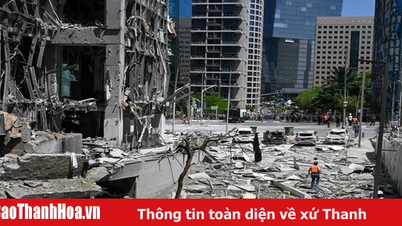1. After the merger, which province/city has the highest per capita income in the country?
- HCMC0%
- Binh Duong0%
- Danang0%
- Hanoi0%
Before the merger, Binh Duong was the locality with the highest average income per capita in the country with 107.6 million VND/year. In second place were Hanoi residents with 89 million, and in third place was Dong Nai with 84.5 million, followed by Hai Phong with 84.4 million, and Ho Chi Minh City with 81.5 million.
After the merger, this ranking has changed, Hanoi ranked number 1 with 89 million VND/year, Ho Chi Minh City ranked number 2 with 86.5 million and Hai Phong ranked number 3 with 78.6 million, Dong Nai has 72.75 million.
2. Which province or city has the largest budget revenue in Vietnam after the merger?
- Hanoi0%
- Quang Ninh0%
- HCMC0%
- Lam Dong0%
Before the merger, Hanoi was the locality with the highest budget revenue in the country in 2024, Ho Chi Minh City was the second. But after the merger, Ho Chi Minh City was "assisted" by Ba Ria - Vung Tau and Binh Duong with nearly 100,000 billion VND and more than 76,000 billion VND in budget revenue, respectively. Ba Ria - Vung Tau and Binh Duong are also localities in the top of the country in terms of budget revenue.
Thus, after the merger, Ho Chi Minh City will lead the country in terms of budget revenue in 2024, with more than 681,935 billion VND, accounting for nearly 31% of the country. Following that is Hanoi with 511,338 billion and Hai Phong with 148,383 billion.
3. Which province has the smallest population in Vietnam after the merger?
- Bac Ninh0%
- Lai Chau0%
- Phu Tho0%
- Hung Yen0%
Lai Chau is a province in the Northwest mountainous region of Vietnam. In 2018, Lai Chau was the 62nd administrative unit of Vietnam (above Bac Kan) in terms of population and 61st in terms of Gross Regional Domestic Product (GRDP).
Lai Chau is one of 11 provinces and cities that will remain the same after the reorganization. With a population of 512,600 people and an area of over 9,000 square kilometers, Lai Chau currently has the lowest population density in the country, only nearly 57 people/square kilometer.
4. Which city has the smallest area in Vietnam after the merger?
- Danang0%
- Can Tho0%
- Hue0%
- Hai Phong0%
After the arrangement of provincial administrative units, the whole country retains 6 centrally-run cities including Ho Chi Minh City, Can Tho, Da Nang, Hue, Hai Phong, and Hanoi.
Of these six cities, Hai Phong has the smallest area of 3,195 square kilometers, even though it has merged with Hai Duong province. Before the merger, Hai Phong had an area of more than 1,500 square kilometers, Hai Duong had an area of more than 1,600 square kilometers.
5. Which city has the largest area in the country after the merger?
- HCMC0%
- Can Tho0%
- Danang0%
- Hue0%
Among the 6 centrally-governed cities, the new Da Nang City (after merging with Quang Nam Province) has an area of over 11,859 square kilometers. Quang Nam, with an area of over 10,574 square kilometers, has helped Da Nang transform from a small city into the largest city in Vietnam.
The new Ho Chi Minh City ranks second with an area of over 6,772km2 (of which Ba Ria - Vung Tau has an area of over 1,982km2, Binh Duong has an area of over 2,694km2, and the old Ho Chi Minh City has an area of over 2,095km2).
Source: https://vietnamnet.vn/sau-sap-nhap-nguoi-dan-tinh-thanh-nao-giau-nhat-ca-nuoc-2413739.html



























































![[Maritime News] Wan Hai Lines invests $150 million to buy 48,000 containers](https://vphoto.vietnam.vn/thumb/402x226/vietnam/resource/IMAGE/2025/6/20/c945a62aff624b4bb5c25e67e9bcc1cb)












![[Infographic] Party Committee of the Ministry of Culture, Sports and Tourism: Marks of the 2020 - 2025 term](https://vphoto.vietnam.vn/thumb/402x226/vietnam/resource/IMAGE/2025/6/22/058c9f95a9a54fcab13153cddc34435e)

























Comment (0)